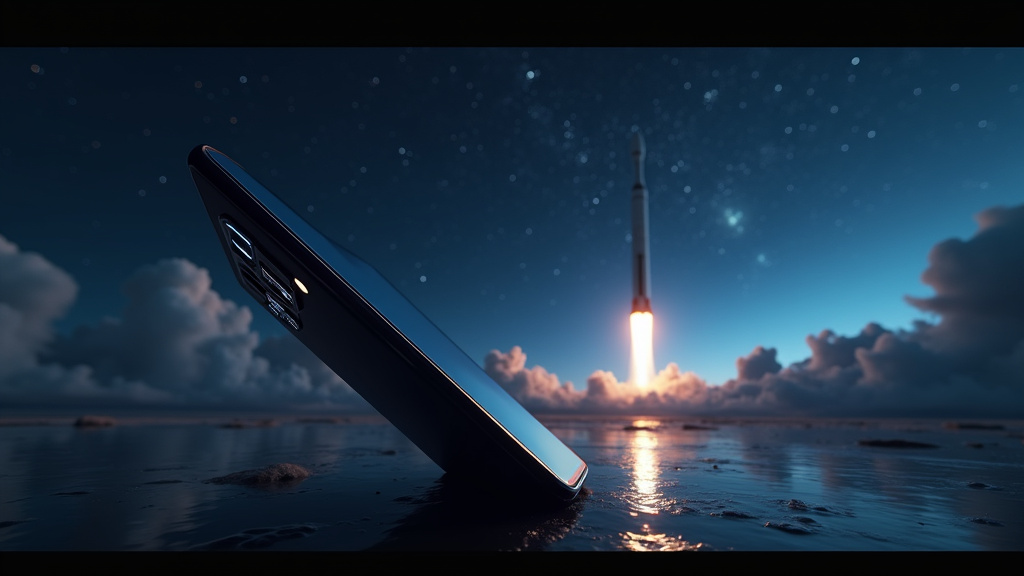As of 2024, NASA’s ongoing research on warp drive technology—a theoretical mechanism for faster-than-light (FTL) travel—is captivating scientists and space enthusiasts alike. The concept, inspired by Einstein’s theories and further developed by innovative physicists, involves bending spacetime to enable rapid transit across astronomical distances. While we are still far from achieving practical FTL travel, recent theoretical advancements are paving the way for what might one day transform from science fiction to science reality.
In this article, we’ll delve into the most recent developments in warp drive theory, explore the energy challenges involved, examine alternative propulsion systems, and look at the future trajectory for NASA’s interstellar travel aspirations.
What is a Warp Drive? Understanding the Basics
A warp drive is a theoretical propulsion system that enables FTL travel by creating a “warp bubble” around a spacecraft. This bubble would compress spacetime in front of the spacecraft and expand it behind, allowing for rapid transit without violating Einstein’s speed of light limitation. Though the spacecraft itself would not technically travel faster than light, the bending of spacetime could allow it to reach distant galaxies in a fraction of the time it would otherwise take.
This revolutionary concept was initially proposed by Mexican physicist Miguel Alcubierre in 1994, who theorized that spacetime could be manipulated to enable effective FTL speeds. Alcubierre’s model, however, came with a massive energy requirement, estimated to be greater than the mass-energy of Jupiter, making it an impractical solution with current technology.
The Problem of Energy Requirements
The principal challenge in realizing a warp drive lies in its energy demands. Early warp drive theories, such as Alcubierre’s, rely on what’s known as “negative energy”—a hypothetical form of energy that is not yet producible at the scale required. The energy needed to manipulate spacetime in this way would far exceed our current capabilities, demanding energy levels that are practically unattainable with existing technology.
This limitation has led scientists to look for alternative approaches that could make a warp drive more viable, reducing the energy requirements to manageable levels or finding methods to bypass the need for negative energy altogether.
New Theoretical Models: Positive-Energy Warp Drives
Dr. Erik Lentz’s Breakthrough with Positive-Energy Solitons
In 2021, Dr. Erik Lentz, a physicist at Göttingen University, proposed a new warp drive model that could potentially eliminate the need for negative energy altogether. His model suggests that a warp drive could be formed using “positive-energy” solitons. Solitons are stable, self-sustaining waveforms that can move through a medium without dissipating, theoretically allowing the creation of a warp bubble without breaching the laws of general relativity.
How Positive-Energy Solitons Work
Unlike previous models, Lentz’s theory posits that positive-energy solitons could generate a warp bubble under certain conditions, using energy more efficiently and potentially within reach of futuristic technologies. This approach still requires a tremendous amount of energy, but it represents a significant step forward, as it moves us closer to a design that could one day be tested and refined.
The Limitations and Future of Positive-Energy Solitons
While Lentz’s model offers a more realistic pathway than earlier warp drive concepts, the energy requirements remain high, even with positive-energy solutions. The model still calls for innovations that drastically reduce energy demands, making it possible to harness these theoretical breakthroughs for practical engineering. Nevertheless, the introduction of solitons into warp drive theory is an exciting development that widens the field of research.
NASA’s Role and Current Efforts in Warp Drive Research
NASA has long been at the forefront of space exploration and technological innovation, and its involvement in theoretical propulsion research is no exception. While warp drive technology remains largely theoretical, NASA continues to support studies into advanced propulsion concepts that could serve as stepping stones to interstellar travel.
NASA’s Advanced Propulsion Research: Hall Thrusters and Electric Propulsion
NASA has focused much of its propulsion research on technologies like Hall thrusters and electric propulsion systems. While not FTL-capable, these propulsion methods represent a significant step forward in space travel efficiency. Hall thrusters, which use electric and magnetic fields to ionize and accelerate xenon ions, have been used in deep-space missions and are set to be part of NASA’s Artemis program and other long-range crewed missions.
Hall Thrusters: A Practical Step Toward Future Space Exploration
Hall thrusters are particularly suited for missions requiring sustained, efficient propulsion over long distances. Their ability to produce a steady and efficient thrust allows for gradual, continuous acceleration, making them ideal for planetary missions within our solar system. The application of Hall thrusters is a prime example of how incremental advancements in propulsion technology can gradually prepare us for the challenges of interstellar exploration.
Challenges Ahead: The Physics and Engineering of Warp Drives
1. Energy Production and Storage
One of the most daunting challenges in realizing a warp drive is energy storage. Current methods of energy generation and storage—whether nuclear, solar, or chemical—are inadequate for the immense power requirements of a warp drive. New technologies in fusion energy, antimatter production, or even dark energy manipulation could potentially provide breakthroughs, but these are still in the early research phases.
2. Material Constraints and Engineering Limits
Warp drive technology requires materials that can withstand intense gravitational forces and the vast energy output involved in manipulating spacetime. The materials we have today are unlikely to withstand the demands of a functional warp drive, necessitating research into advanced materials with extreme durability and resilience.
3. Navigational Control and Safety
Another key consideration is the control and safety of a warp bubble. If scientists were to create a warp bubble around a spacecraft, they would also need to find a way to navigate and control it accurately. Misalignments in spacetime distortion could pose serious risks, including the potential for catastrophic failure.
Future Prospects: From Theory to Application
Despite the challenges, scientists and engineers remain hopeful. New models and theories continue to be explored, each bringing us closer to understanding what might be possible with future technologies.
Potential for Private Sector Collaboration
As space exploration becomes increasingly accessible to private companies, partnerships between NASA and the private sector could expedite research and development efforts. Companies such as SpaceX, Blue Origin, and others may offer expertise and resources that complement NASA’s research, bringing new ideas and resources to the pursuit of advanced space travel technologies.
The Role of International Collaboration
The ambitious nature of warp drive research makes it well-suited for international collaboration. By pooling resources, expertise, and knowledge from space agencies around the world, we can accelerate the development of theoretical models and experimental prototypes. Collaborative missions, like those conducted by NASA and the European Space Agency (ESA), serve as a model for the kind of teamwork that could ultimately make interstellar travel a reality.
A Glimmer of Hope: Moving Warp Drive from Theory to Engineering
Warp drive technology, though still speculative, has transitioned from pure theoretical physics into the realm of theoretical engineering. As new models emerge and energy requirements become more manageable, the idea of FTL travel is inching closer to feasibility. Researchers are hopeful that continued advancements in physics, materials science, and energy production will one day bring the dream of warp drives into practical development.
What Does the Future Hold for Warp Drive Technology?
While a functioning warp drive remains decades, if not centuries, away, each theoretical breakthrough strengthens our understanding of FTL possibilities. Through interdisciplinary research, dedicated resources, and ongoing scientific curiosity, humanity’s dream of exploring the stars is one step closer to reality.
Frequently Asked Questions
What is a warp drive, and how does it work?
A warp drive is a theoretical propulsion system that could enable faster-than-light travel by creating a “warp bubble” around a spacecraft. This bubble would distort spacetime, allowing rapid travel across vast distances without moving the spacecraft itself faster than light.
Who proposed the original concept of a warp drive?
The concept was initially proposed by physicist Miguel Alcubierre in 1994. His model suggested that spacetime could be contracted in front of a spacecraft and expanded behind it, enabling effective FTL speeds.
What are the main challenges in developing a warp drive?
The primary challenges include the immense energy requirements, the need for advanced materials, and developing methods to safely navigate and control a warp bubble.
Is NASA actively working on warp drive technology?
While NASA is not building a warp drive, it supports research in advanced propulsion technologies and theoretical studies that could lay the groundwork for future FTL systems.
What role does the private sector play in warp drive research?
The private sector, including companies like SpaceX and Blue Origin, is playing an increasingly important role in space exploration. Collaborations with private companies could potentially expedite research into advanced propulsion technologies.










